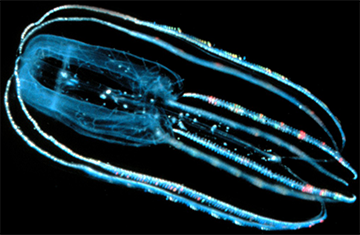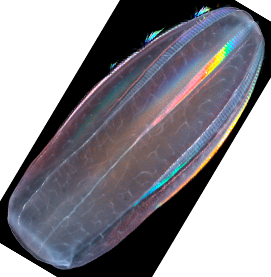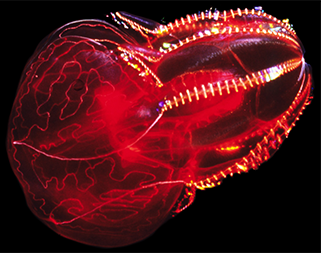The Science Behind Living Light
Bioluminescence is a hybrid word, originating from the Greek bios for "living" and the Latin lumen "light".
The French pharmacologist Raphaël Dubois carried out much of the early work on bioluminescence. He was a French pharmacologist known for his work on bioluminescence as well as anesthesia, and also coined the terms “proteon” and “bioproteon.”

Bioluminescence is a form of luminescence, or "cold light" emission by living organisms; less than 20% of the light generates thermal radiation.
Bioluminescence is a form of chemiluminescence where light energy is released by a chemical reaction. Fireflies, anglerfish, and other creatures produce the chemicals luciferin (a pigment) and luciferase (an enzyme). The luciferin reacts with oxygen to create light. The luciferase acts as a catalyst to speed up the reaction, which is sometimes mediated by cofactors such as calcium ions or ATP. The chemical reaction can occur either inside or outside the cell.
In bacteria, the expression of genes related to bioluminescence is controlled by an operon aptly named the Lux operon.

Bioluminescence is used as a lure to attract prey by several deep sea fish such as the anglerfish. A dangling appendage that extends from the head of the fish attracts small animals to within striking distance of the fish.
Dinoflagellates may use bioluminescence for defence against predators. They shine when they detect a predator, possibly making the predator itself more vulnerable by attracting the attention of predators from higher trophic levels.
A South American giant cockroach, Lucihormetica luckae, uses bioluminescence to mimic the toxic Pyrophorus beetle for defensive purposes.
Attracting MatesIn the marine environment, the use of luminescence for mate attraction is well documented in ostracods, small shrimplike crustaceans. Pheromones may be used for long-distance communication, with bioluminescence used at close range to enable mates to home in on each other.
DistractionCertain squids and small crustaceans use bioluminescent chemical mixtures or bacterial slurries in the same way many squids use ink. A cloud of luminescent material is expelled, distracting or repelling a potential predator, giving the animal an opportunity to escape to safety.
WarningAposematism, commonly known as the adaptation where an organism deters potential predators through bright warning coloration, is a widely used function of bioluminescence. It is suggested that many firefly larvae glow to repel predators. Millipedes have been also shown to glow for the same purpose.
CommunicationCommunication (via quorum sensing) plays a role in the regulation of luminescence in many species of bacteria. Using small extracellularly secreted molecules, they turn on genes for light production only at high cell densities.

Bioluminescent organisms are a target for many areas of research.
Luciferase systems are widely used in the field of genetic engineering as reporter genes. Luciferase systems have also been harnessed for biomedical research using bioluminescence imaging. Vibrio symbiosis with numerous marine invertebrates and fish, namely the Hawaiian Bobtail Squid (Euprymna scolopes), are key experimental models for bioluminescence.
The structures of photophores, the light producing organs in bioluminescent organisms, are being investigated by industrial designers. Engineered bioluminescence could perhaps one day be used to reduce the need for street lighting, or for decorative purposes.
The gene that makes fireflies' tails glow has been added to mustard plants. The plants glow faintly for an hour when touched, but a sensitive camera is needed to see the glow.
Undergraduates at the University of Wisconsin–Madison are researching the use of genetically engineered bioluminescent E. coli bacteria, for use as bioluminescent bacteria in a bio bulb.
In June 2013 the Glowing Plant project successfully raised nearly $500,000 on the crowd funding site Kickstarter to create a bioluminescent plant. The project's long term goal is the creation of trees that can be used for street lighting.
Bioluminescent activated destruction is an experimental cancer treatment.